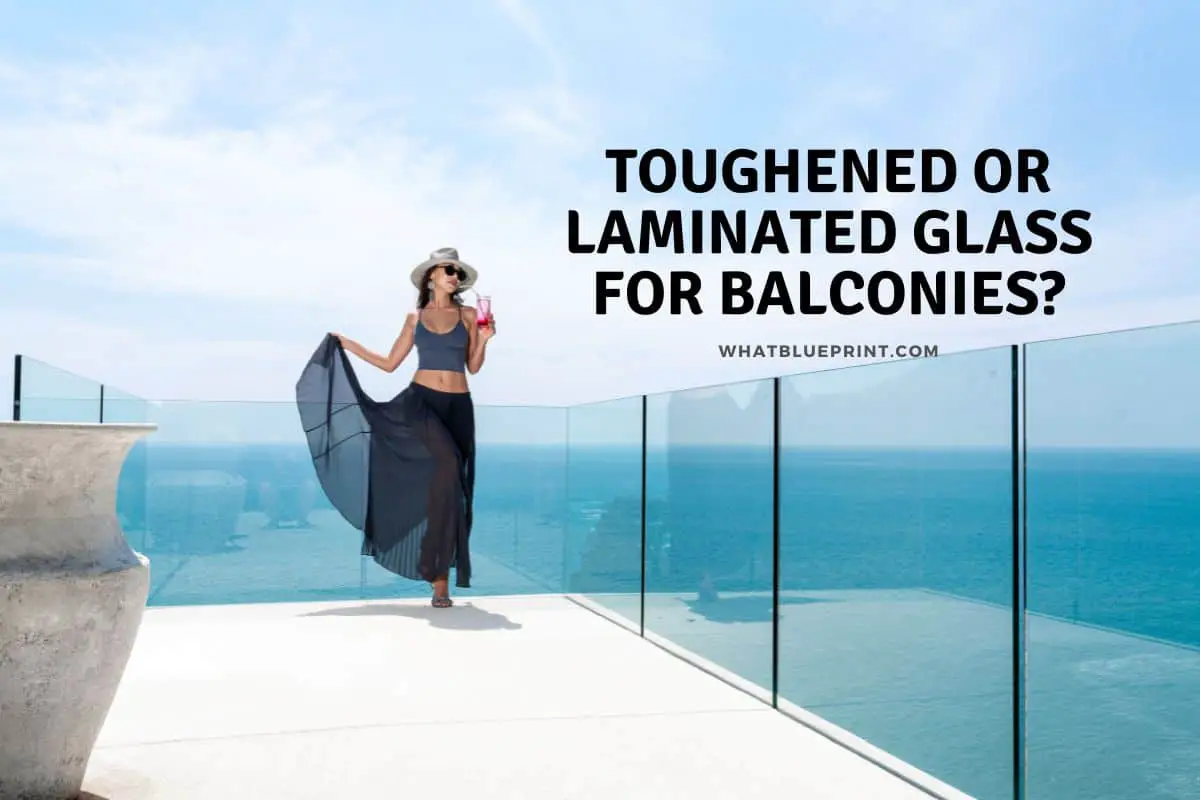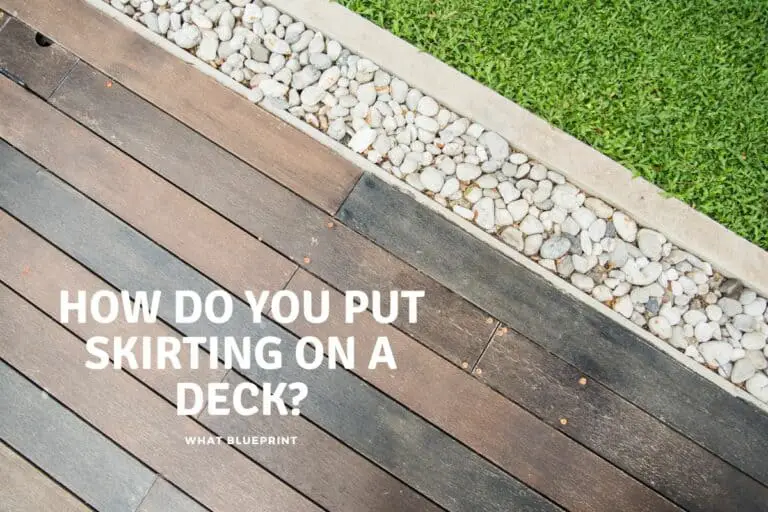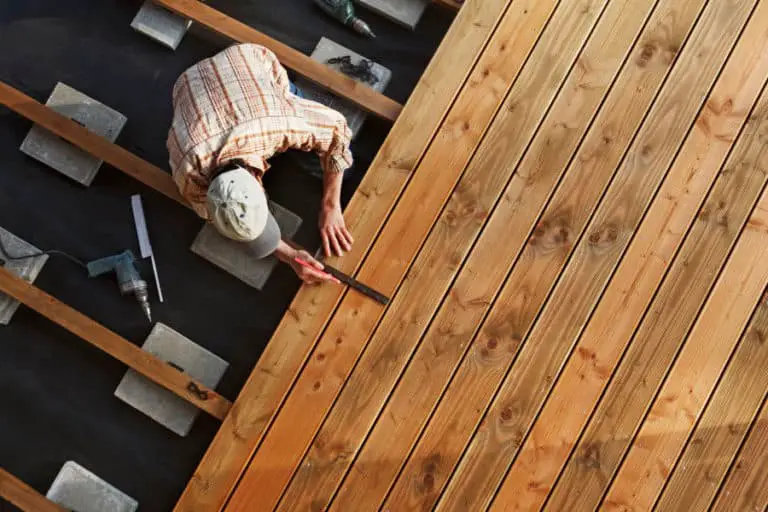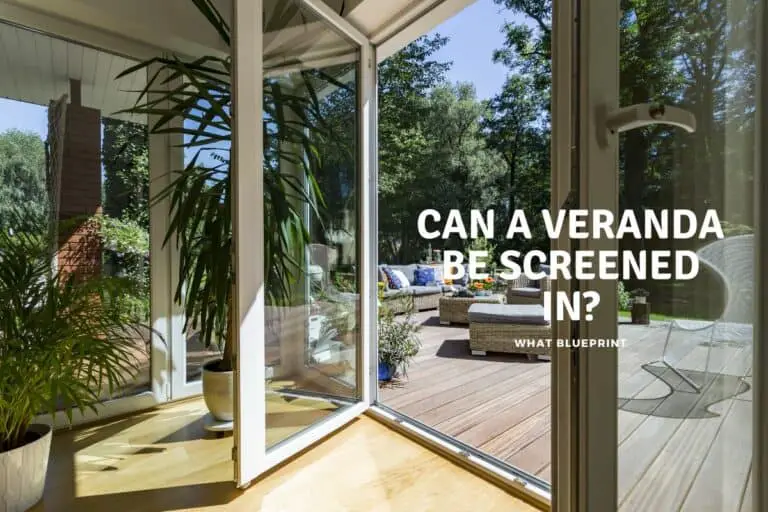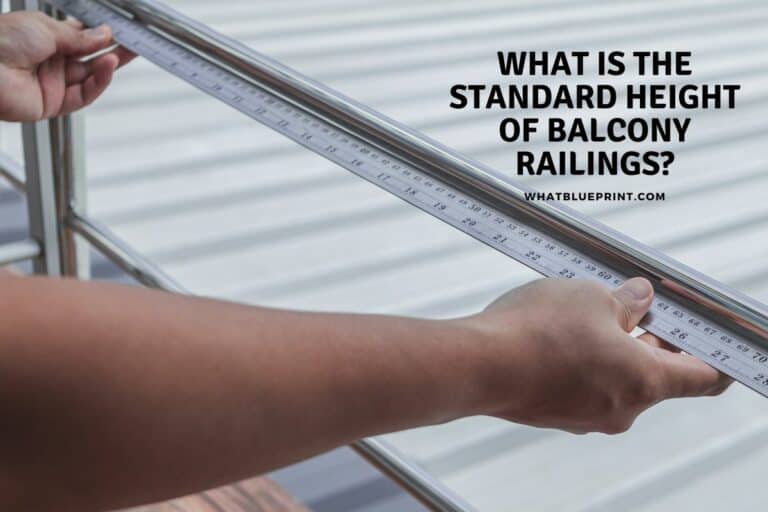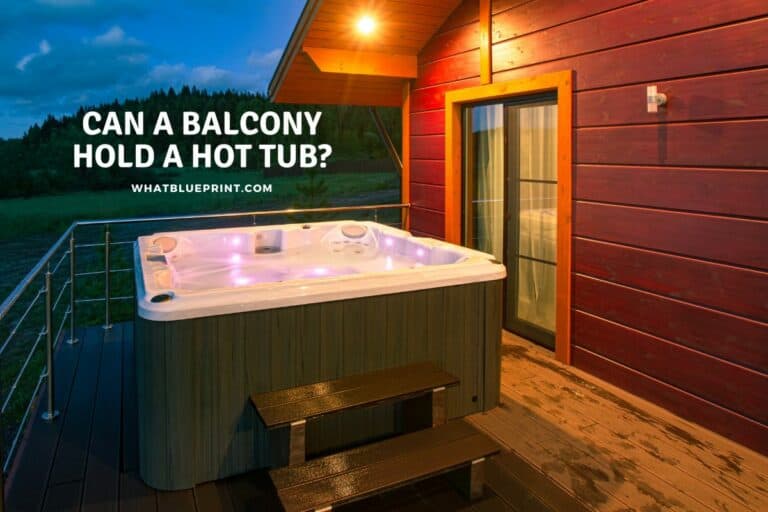Toughened Or Laminated Glass For Balconies?
People often confuse toughened and laminated glass. After all, both types of glass are classed as “safety glass” and are considered superior to regular glass. Despite these similarities, there are crucial differences between these types. By understanding how these types of glass differ, you’ll be able to choose the best safety glass for your balcony!
While both toughened and laminated glass are suitable for balconies, many homeowners prefer using laminated glass for the benefits it provides. Not only is laminated glass durable and shatterproof, but it’s wind resistant and blocks UV A and UV B rays. However, toughened glass is more affordable.
For those struggling to decide between toughened or laminated glass for your home’s balcony, we’ll simply the decision-making process. From the manufacturing process to the cost of each, we’ll compare every aspect of these two safety glasses to help you choose the best option for your balcony.
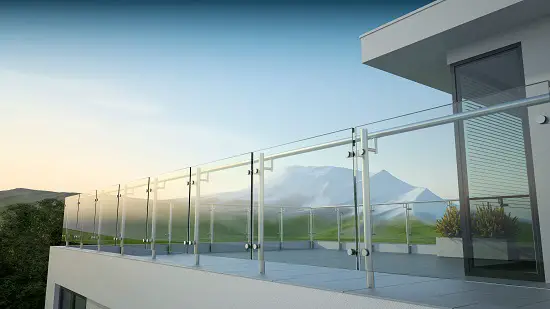
Choosing Between Toughened Or Laminated Glass For Balconies
When choosing between toughened or laminated glass for your balcony, homeowners need to understand the core differences between these types. Our comparisons between toughened and laminated glass will allow you to choose the right type of safety glass for your balcony and your budget!
Toughened Vs. Laminated Glass: Manufacturing Process
Although toughened and laminated glass are both types of safety glass, their manufacturing processes distinguish them from one another. Many properties and advantages of each type of glass are closely linked to the manufacturing process – this will become clearer in the remaining comparisons.
Standard glass is treated with a toughening process to create toughened glass, which greatly increases its durability and strength. The manufacturing process involves heating the standard glass and applying high pressure, followed by additional chemical treatment procedures. This process allows the toughened glass to have a better internal stress balance. Toughened glass is also called tempered glass.
Laminated glass is created by bonding two glass layers with a plastic or resin layer. Typically, this resin is PVB (polyvinyl butyral) and is responsible for holding the two glass layers together. Heat and pressure are used to bond these layers of glass and PVB resin, resulting in glass that is more compact than standard glass.
Toughened Vs. Laminated Glass: Strength
Despite the different manufacturing processes, both toughened and laminated glass are stronger than standard glass – but which is stronger? When choosing between these types of glass for your balcony, strength is a crucial consideration because it’s closely linked to security, which we’ll discuss next.
The strength of toughened glass derives from the manufacturing process, which applies heat and pressure to standard glass. Laminated glass, on the other hand, is strengthened through the glass and resin layers. Overall, both types of glass are structurally and thermally improved and at least five times stronger than standard glass.
Overall, toughened glass has a greater resistance to force, making it stronger than laminated glass. However, despite both being stronger than standard glass, they do not shatter the same way. In turn, this affects the security provided by each type of glass, as we’ll outline in our following comparison. Toughened Vs. Laminated Glass: Fragmentation
Due to the differing manufacturing processes, toughened and laminated glass does not shatter the same way. While tempered glass is stronger than laminated glass, it can be shattered into small pieces. Luckily, when toughened glass is shattered, it breaks into rounded pieces, preventing the risk of injury.
Laminated glass, on the other hand, will not shatter if the glass is broken. Instead, the glass pieces will stick together, often resembling a web-like pattern. The reason for this is the vinyl or plastic layer between the glass layers. Since laminated doesn’t shatter, it’s often preferred for external uses like balconies. Toughened glass, however, is considered better for internal uses.
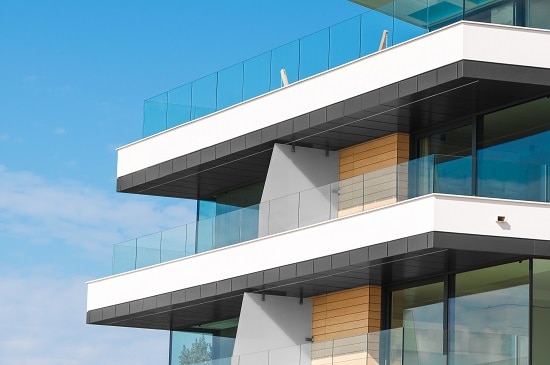
Toughened Vs. Laminated Glass: Security
Above, we discussed how both toughened and laminated glass shatter. Ultimately, this greatly impacts the security offered by each type of glass. With toughened glass, it will be possible for the glass to shatter into rounded pieces. Although these pieces aren’t sharp, the broken glass could leave your balcony more exposed until the broken glass is replaced.
With laminated glass, however, the glass will retain its shape when shattered. This design has resulted in laminated glass commonly being used for doors and windows. However, it also makes laminated glass the perfect choice for your balcony! Should any of the glass panels in your balcony shatter, they won’t fall apart! Of course, that means you can wait longer to replace the glass.
Toughened Vs. Laminated Glass: UV Resistance
When discussing the UV resistance of glass, we need to consider both UV A and UV B resistance. Both toughened and laminated glass can block UVB radiation, which has shorter wavelengths. However, UV B radiation only makes up an estimated 5% of the sun’s UV rays. UV A radiation, on the other hand, makes up the remaining 95% of UV rays.
Due to this, it’s important to consider the ability of a glass to resist UV A radiation. Unfortunately, UV A radiation can penetrate tempered/toughened glass. The design of laminated glass allows it to block roughly 98% of all UV A radiation.
Due to the differing UV resistance properties of these two glass types, laminated glass is preferred for use on balconies. By choosing laminated glass for your balcony, you can effectively reduce UV A and UV B radiation.
Toughened Vs. Laminated Glass: Wind Resistance
When installing external glass, such as the glass used for balconies, wind resistance is an important consideration – especially if you live in an area prone to strong winds, hurricanes, or other harsh elements. So, which of these safety glass types is better in terms of wind resistance?
Tempered glass can withstand strong winds and even hurricanes, which is why it’s often used externally. Due to the way toughened glass shatters, it effectively reduces the risk of injury should the glass be shattered. However, the shatterproof design of laminated glass makes it an equally popular choice.
Laminated glass can withstand harsh wind and severe storms. Temporary glass adds a safety element for those living in regions prone to such weather conditions. Even when the glass is shattered, it will remain in place and keep sheltering your balcony from the elements.
In terms of wind and hurricane resistance, these types of glass are both fantastic choices. However, laminated glass has the upper hand due to its shatterproof nature. Regardless of which glass you decide to use for your balcony, you can rest assured it will be resistant to severe weather conditions!
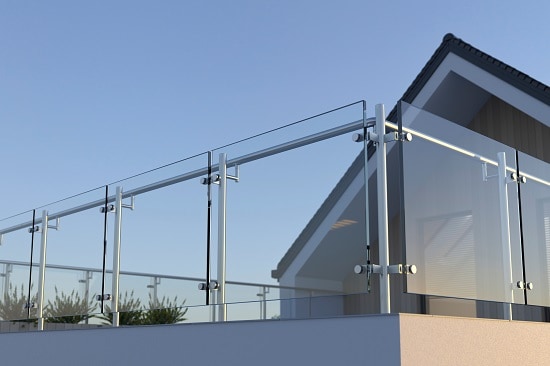
Toughened Vs. Laminated Glass: Privacy
When it comes down to balconies, privacy is always a concern for homeowners. Depending on where your balcony is situated, you might be worried about neighbors being able to see you. Luckily, both toughened and laminated glass can be tinted to improve your balcony’s overall privacy. We also have articles on balcony shade and privacy here on the site including ways to keep your balcony private and the best balcony privacy screens.
When tempered glass is tinted, a thin metallic coating is added to it. Not only does this coat tint the glass, but it also allows the glass to reflect UV rays. As we discussed earlier, laminated glass handles UV radiation far better than tempered glass. However, with this coating, toughened glass can reflect these UV rays.
With laminated glass, however, there’s no need for a specialized coating! When laminated glass is tinted, the same manufacturing process is used. However, a colored interlayer is used between the glass panels. Both tinted and un-tinted laminated glass can effectively block out UV A and UV B radiation.
Toughened Vs. Laminated Glass: Soundproofing
Balconies can help block outside noise – especially if you use glass with soundproofing qualities. Due to the internal layer sandwiched between the glass panes, laminated glass effectively dampens soundwaves. This will improve acoustic performance on your balcony while reducing any noise heard from inside.
While toughened glass is popular for its strength and durability, it does not have soundproofing qualities. For those living in particularly noisy or windy areas, choosing laminated glass for your balcony will benefit you in more ways than one!
we have a whole host of articles on balcony constructions and advice on the site and have included some in the list below if you need or want to know more. There are loads more which a quick search for balcony will bring up if you need.
Toughened Vs. Laminated Glass: Eco-Friendliness
When comparing toughened and laminated glass, it’s important to consider the sustainability of each material. Overall, toughened glass is a more environmentally friendly material. Toughened glass is fully recyclable. However, if toughened glass ended up in a landfill, the glass would break down and won’t emit any harmful chemicals into the soil.
While there are many benefits to using laminated glass for your balcony, it’s not the most eco-friendly type of glass. Ultimately, this is due to the layer of plastic commonly used between the glass panes. This inner layer makes it difficult to recycle laminated glass.
Toughened Vs. Laminated Glass: Cost
Finally, it’s important to consider the difference in price between these glasses when deciding which to use for your balcony. Both toughened and laminated glass are more expensive than standard glass. Ultimately, the cost of each type of glass reflects the properties and manufacturing process of the glass.
In terms of these safety glasses, laminated glass tends to be more expensive than tempered glass. The higher price of laminated glass is due to its complex manufacturing process and materials used. This treatment process is responsible for many advantages laminated glass offers, including shatterproof and UV resistant properties.
If you want to keep costs low when fitting your balcony with glass, you may prefer using toughened or tempered glass for your balcony. However, if you want to use laminated glass for its many benefits, you will need to splurge a bit more on it!
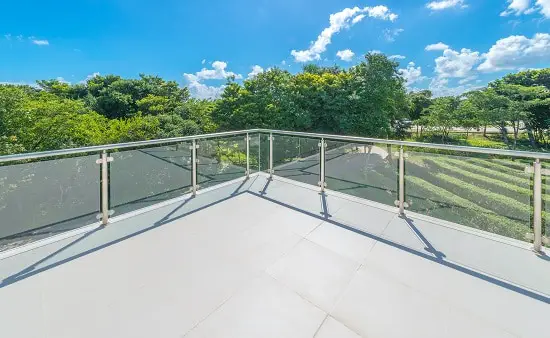
Final Verdict: Is Toughened Or Laminated Glass Better For Balconies?
Toughened and laminated glass are both great choices for use on a balcony – but which one is the best? In the previous section, we compared many aspects of these two types of safety glass. Throughout our comparison, it was clear that laminated glass is the better choice for balconies.
Laminated glass is shatterproof and far stronger than standard glass, making it ideal for external uses. Due to this shatterproof design of laminated glass – which also makes it wind and hurricane resistant – it’s widely considered the safer option. The soundproof properties of laminated glass even help block outside noise.
UV A and UV B radiation is fully blocked by laminated glass due to the enhanced UV filtration properties. If you decide to use laminated glass for your balcony, you’ll be able to choose a tinted version to increase your balcony’s privacy.
Unfortunately, laminated glass is more expensive than toughened glass. Not only is tempered glass more affordable, but it also boasts durability. While tempered glass can be shattered, it breaks into rounded pieces. These rounded pieces prevent injuries and can be easily recycled.
Despite these benefits of toughened glass, laminated glass remains the better choice for balconies. However, the laminated glass used for balconies is often toughened. Once the laminated glass has been manufactured by combining the different panels, it undergoes an additional toughening process.
The additional treatment to toughen laminated glass for balconies is why it costs more than tempered glass. By combining the manufacturing processes of toughened and laminated glass, the laminated glass only becomes more durable through the toughening process.
If you’re looking for affordable safety glass for your balcony, toughened glass is a great choice. While tempered glass can be shattered, this is very unlikely. As we explained earlier, tempered glass is stronger than untoughened laminated glass. Should the glass break, it will break into rounded pieces.
However, if you want to choose the best safety glass for your balcony, toughened laminated glass will be worth the extra cost! By choosing this type of glass, you’ll have all the benefits of laminated glass with the increased durability of tempered glass. Ultimately, this is the best option for use on balconies.
Conclusion
For balconies, both toughened and laminated glass are suitable. However, laminated glass is preferred by many homeowners due to the benefits it offers.
Not only is laminated glass durable and shatterproof, but it’s wind resistant and blocks UV A and UV B rays. The laminated glass used for balconies is also toughened like temper glass, increasing its strength and durability. You can check out our full article on laminated balcony glass here on the site.
Sources:
- https://www.scientificamerican.com/article/how-is-tempered-glass-mad/
- https://glassdoctor.com/expert-tips/all-about-glass-repair/laminated-vs-tempered-glass
- https://www.sciencedirect.com/science/article/abs/pii/S0013794417309621
- https://www.astm.org/stp1434-eb.html
- https://www.myuv.com.au/workplaces/outdoor-worker-blog/building-and-vehicle-glass-uv-exposure-risks/
- https://www.hunker.com/12000120/tempered-vs-annealed-glass

